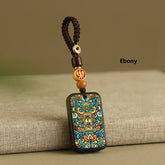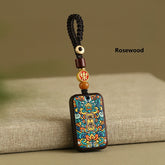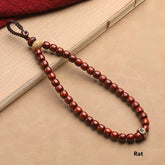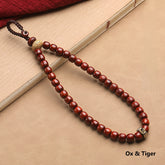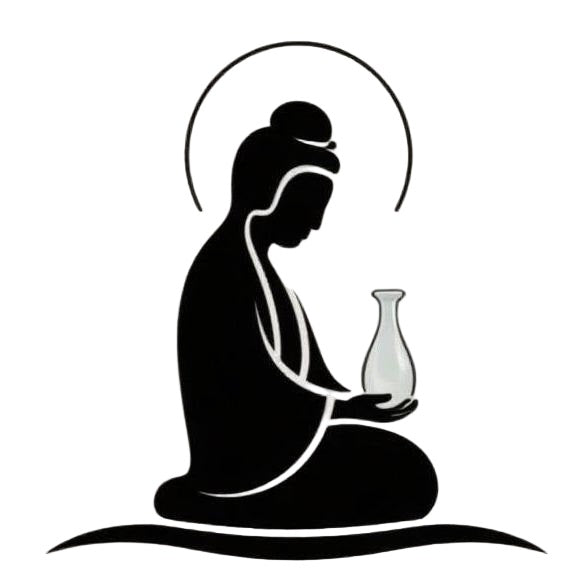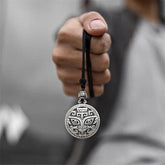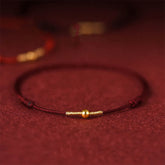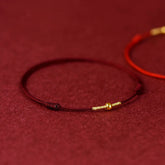Symbols of Strength: Buddhist & Feng Shui Icons for Resilience
Throughout human history, cultures worldwide have developed powerful symbols of strength to represent resilience, protection, and inner fortitude. In Buddhist and Feng Shui traditions, these icons serve as visual reminders of our inherent capacity to overcome challenges and transform adversity into growth. From the unbreakable diamond scepter of Vajrayana Buddhism to the majestic lions guarding temple entrances, these symbols of strength offer more than aesthetic appeal—they provide practical spiritual tools for navigating life's difficulties with courage and wisdom.
Understanding these potent emblems allows us to tap into ancient wisdom that remains profoundly relevant today. This comprehensive guide explores the most significant Buddhist symbols of resilience and their corresponding Feng Shui protection items, examining their historical origins, spiritual meanings, and practical applications. Whether you're facing personal challenges or simply seeking to cultivate greater resilience, you'll discover how these timeless icons can support your journey toward unshakable spiritual strength.
The Foundation of Strength in Spiritual Traditions
What Makes a Symbol Powerful?
Symbols of strength derive their power from both cultural consensus and personal connection. According to renowned psychologist Carl Jung, universal archetypes embedded in our collective unconscious give certain symbols profound resonance across cultures and generations. In Eastern traditions, this concept aligns with the idea that specific forms can channel particular energies or blessings.
The most enduring symbols of strength typically share these characteristics:
-
Historical continuity across generations
-
Multiple layers of meaning
-
Connection to natural forces or divine principles
-
Practical applications in spiritual practice
Strength in Buddhist Philosophy
In Buddhism, true spiritual strength differs markedly from worldly power. Rather than domination over others, Buddhist strength emphasizes self-mastery, compassion, and unshakable peace amid changing circumstances. The historical Buddha himself demonstrated this type of strength through his unwavering commitment to enlightenment despite numerous challenges and temptations.
Key Buddhist Symbols of Strength
The Vajra: Unbreakable Diamond Scepter
The Vajra (or Dorje in Tibetan) stands as one of the most potent Buddhist symbols of indestructibility. Originally representing the thunderbolt of the Hindu god Indra, it transformed within Buddhism to symbolize the immutable nature of enlightened consciousness—harder than diamond yet completely transparent to reality.
This ritual object embodies several aspects of spiritual power:
-
Wisdom and Compassion: The five prongs at each end represent the five wisdoms that transform negative mental states
-
Indestructibility: Its diamond-like nature symbolizes the timeless quality of enlightenment
-
Skillful Means: The central sphere represents the integration of wisdom and method
Used in meditation and ritual, the Vajra helps practitioners cultivate diamond-like resilience that remains unbroken by life's challenges.
The Lion: Voice of Fearlessness
The lion appears frequently in Buddhist art and architecture as the embodiment of fearless proclamation of truth. As the historical Buddha was known as the "Lion of the Shakya Clan," this majestic animal represents the powerful voice of Dharma that awakens beings from ignorance.
In Buddhist contexts, the lion symbolizes:
-
Royal authority over one's mind
-
Courage in teaching truth
-
Protection against negative influences
Stone lions often flank temple entrances, serving as guardians and reminders of the fearless nature we can all develop through practice.
The Bodhi Tree: Unshakable Foundation
While not as immediately dramatic as other symbols of strength, the Bodhi Tree represents profound resilience through its deep roots and enduring presence. Under this ancient fig tree, the Buddha attained enlightenment after withstanding Mara's assaults through his unwavering commitment to truth.
The Bodhi Tree teaches us about:
-
Rootedness in ethical conduct and meditation
-
Patient endurance through difficulties
-
The sheltering quality of awakened mind
Many Buddhists worldwide cultivate Bodhi Tree saplings as living reminders of this steadfast strength.
Feng Shui Symbols for Protection and Resilience
Fu Dogs: Guardians of Sacred Space
In Feng Shui protection practices, Fu Dogs (sometimes called Imperial Guardian Lions) represent powerful defensive energy. Positioned in pairs outside homes or temples, these mythical creatures ward off negative influences while attracting benevolent forces.
The traditional placement and meanings include:
-
Male with Ball: Represents protection of physical structure
-
Female with Cub: Safeguards inhabitants and relationships
-
Facing Outward: Prevents negative energy from entering
Placing Fu Dogs at your entrance or in the career area of your home creates an energetic boundary that filters harmful influences while maintaining openness to opportunities.
The Tortoise: Longevity and Stability
Known as one of the four celestial animals in Feng Shui protection systems, the Black Tortoise represents stable support from behind. Its hard shell and slow, deliberate movements symbolize the strength of endurance, calculated action, and long-term resilience.
The tortoise teaches valuable lessons about strength:
-
Consistency overcomes momentary intensity
-
Protection comes through wise boundaries
-
Lasting success requires patience
Placing a tortoise figurine in the northern sector of your home or office enhances career stability and personal endurance.
The Bagua Mirror: Deflecting Negative Energy
Perhaps the most direct Feng Shui protection tool, the Bagua Mirror serves as a spiritual shield against harmful environmental influences. Typically placed above doors or windows facing threatening structures, its eight trigrams surrounding a central mirror create an energetic barrier.
Understanding mirror types enhances their effectiveness:
-
Convex: Pushes negative energy away
-
Concave: Draws and contains harmful influences
-
Flat: Reflects energy directly back to source
When used conscientiously, Bagua Mirrors protect your space without generating aggression toward neighbors.
Integrating Strength Symbols into Spiritual Practice
Meditation with Strength Symbols
Incorporating symbols of strength into meditation deepens their impact on your consciousness. Try these approaches:
-
Visualization: Hold a physical symbol or visualize it clearly, absorbing its qualities
-
Mantra Integration: Combine symbol meditation with relevant mantras
-
Contemplation: Reflect on how the symbol's attributes manifest in your life
Regular meditation with these icons gradually transforms their external power into internal resilience.
Creating a Strength Altar
Dedicate a space in your home to cultivating spiritual fortitude:
-
Select symbols that personally resonate with your challenges
-
Arrange them thoughtfully with respect to direction and element
-
Include representations of both protective and proactive strength
-
Visit daily for inspiration and recommitment
This sacred space serves as a tangible reminder of your growing resilience.
Modern Applications of Ancient Strength Symbols
Jewelry and Personal Talismans
Wearing symbols of strength as jewelry allows you to carry their protective energy throughout your day. Popular options include:
-
Vajra pendants for mental clarity
-
Lion rings for courageous communication
-
Tortoise bracelets for steady progress
Choose materials that align with each symbol's elemental associations for enhanced effect.
Home and Office Placement
Strategic placement of strength symbols creates supportive environments:
-
Home Office: Vajra or lion imagery enhances professional confidence
-
Bedroom: Gentle symbols like the Bodhi Leaf promote restorative sleep
-
Entryway: Fu Dogs or Bagua Mirrors filter incoming energy
-
Meeting Spaces: Dragon-and-tiger pairs balance assertive and receptive energies
The Inner Meaning of External Symbols
From Symbol to Experience
While symbols of strength provide valuable support, their ultimate purpose is to point toward inner qualities we already possess. The true power of these icons lies in their ability to remind us of our inherent resilience, courage, and stability. As the Buddha taught, "You yourself must strive; the Buddhas only point the way."
Cultivating Living Strength
Beyond collecting symbolic representations, we develop genuine spiritual strength through:
-
Consistent ethical conduct
-
Regular meditation practice
-
Mindful response to challenges
-
Compassionate engagement with others
These practices transform symbolic strength into lived reality.
Conclusion: Embodying Sacred Strength
The rich tapestry of symbols of strength across Buddhist and Feng Shui traditions offers timeless wisdom for navigating our modern world. From the indestructible Vajra to the protective Fu Dogs, these powerful icons serve as bridges connecting us to profound spiritual resources. By understanding their meanings and integrating them thoughtfully into our lives, we access deeper reservoirs of resilience, courage, and stability.
At Fengshui&Buddha, we honor these ancient traditions through carefully selected items that embody these potent symbols. Each piece serves not merely as decoration but as a focal point for cultivating the unshakable strength that resides within all beings. May these symbols support your journey toward fearless living and compassionate power.



